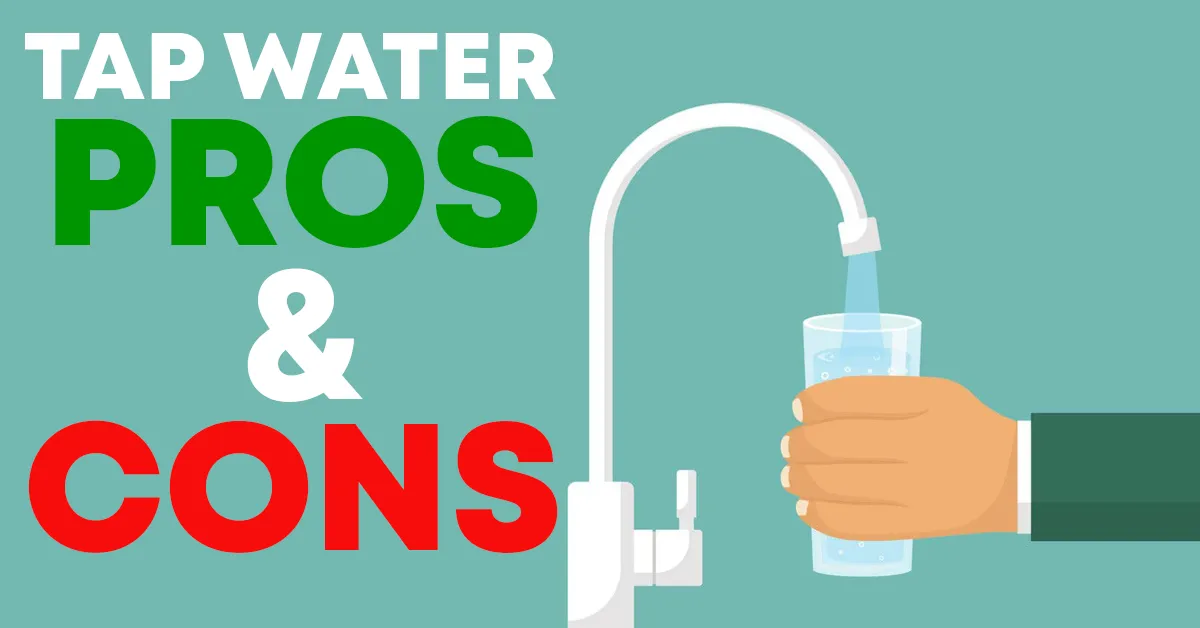The adequate daily fluid intake according to the U.S. National Academies of Science, Engineering, and Medicine is 3.7 liters for men and 2.7 liters for women.
Plus over half of your body is made of water.
That’s a lot of water! Though some of your daily water consumption comes from food, the majority comes from simply drinking.
The simplest way to get your water is right out of the tap – the source of choice for 71% of Americans.
But tap water detractors will point out that your tap water may be different than your co-workers across town. While all tap water is subject to regular testing, the acceptable limits for various tests need to fall within a range, which can cause variations from household to household.
How is Tap Water Tested
If you receive a monthly water bill, then you have public water in your home. This means the tap water entering your home is being tested and managed by a public entity that keeps in compliance with the Safe Drinking Water Act.
Your public water access is tested regularly to ensure you are within the healthy limits for any possible contaminants. In the event of a failed test, water supply issues can be resolved and households can be contacted often before a large-scale issue occurs.
Of course tap water is only tested at the source, so if your plumbing (particularly in older homes) contains contaminants, it will not be identified by your local water supplier. In that case, you will need to test the water in your home yourself to check for contaminants.
Additionally, if you do not receive a water bill, because you receive water from your private well, you will need to test regularly for contaminants since you do not have an outside entity testing for you.
For a household, the easiest testing is via a paper testing strip that you get wet. It will then react to indicate lead, nitrate, copper, and other contaminant levels.
Is Hard Water Bad to Drink?
Most homes are equipped with a water softener that uses salt to remove calcium and magnesium from your water.
If you do not have a water softener, then you have “hard water.” This can often taste differently because of the presence of calcium and magnesium which you would not find in traditional soft tap water or bottled water.
Hard water is just as safe to drink as soft water.
Why does Tap Water Taste Different than Bottled Water?
Bottled water may come from springs, or is pre-filtered. Tap water on the other hand contains additional minerals and additives that while safe, may give your water a different taste.
Chlorine, which is added to US tap water, is the most well-known of these minerals. The purpose of adding chlorine to tap water is to disinfect it from any possible contaminants. The limited amount of chlorine in tap water is safe to drink according to the EPA.
Pros of Drinking Tap Water
Tap water is the easiest, cheapest, and most convenient way to access water. It also allows you to use a reusable water bottle rather than contribute to the 600 billion plastic bottles and containers manufactured in 2021 alone.
If you have access to public water, your water undergoes testing before it comes to your house. But if you want to do additional testing in your home, you can quite easily.
If your tap water comes from a well, repairs, and maintenance on the well can be expensive, but you will save money not having a regular water bill. You will also have the peace of mind that you control if any chlorine is added to your water.
Cons of Drinking Tap Water
Due to the stringent testing around public drinking water, you would likely be able to drink tap water for your entire life without encountering any dangerous contaminants.
Tap water (hard or softened) is safe to drink. This means the biggest “con” against tap water is simply if you can put up with the taste. Water softeners or water filtration systems can help with that.


